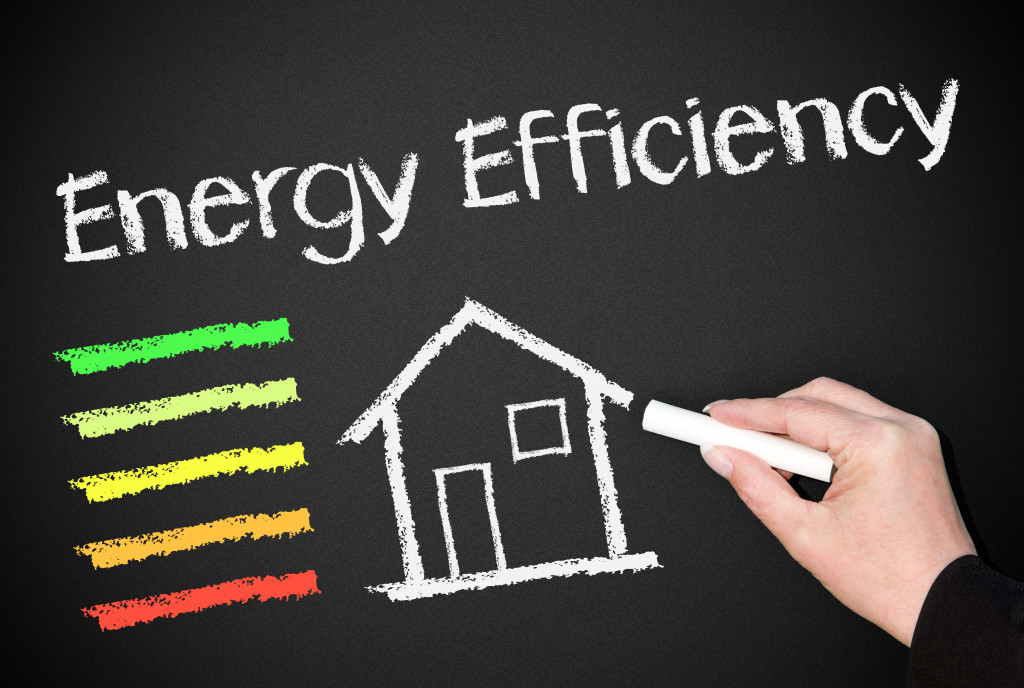- Energy-efficient technologies like ENERGY STAR appliances, smart thermostats, and LED lighting can lower utility costs.
- Insulated windows and electrical repairs can prevent energy loss, while solar panels provide renewable energy.
- Water-efficient fixtures like low-flow showerheads, dual-flush toilets, and rainwater harvesting systems reduce water usage.
- Implementing these technologies not only saves money but attracts eco-conscious tenants, offering sustainable living solutions.
Are you tired of high energy bills eating into your profits? Or do you simply want to optimize the energy consumption of your rental home to do your bit for the planet? Whatever your goals, implementing energy-efficient technologies can make a significant impact. Not only will you save money on utility bills, but you’ll also attract eco-conscious tenants who prefer sustainable living options. This blog will explore some of the best technologies that improve energy efficiency for your rental home.
Energy-efficient Appliances & Fixtures
Many appliances, such as refrigerators, washing machines, and dryers, come with an ENERGY STAR label, indicating that they meet federal energy efficiency standards. Investing in such appliances saves energy and ensures that they last longer and need fewer repairs, reducing overall maintenance expenses. Here are other examples:
Smart Thermostats
One of the most effective ways to lower energy costs is by regulating your home’s temperature. Traditional thermostats don’t offer much flexibility in terms of adjusting temperature settings based on usage patterns or outside weather conditions.
However, a smart thermostat can do just that and more. It learns your habits and preferences over time and adjusts the temperature accordingly, reducing energy waste. Moreover, you can control it remotely via a mobile app, so you can switch off the heating or cooling when nobody’s home or make sure your home is comfortable when you return from work.
LED Lighting
Another technology that can drastically reduce energy costs is LED lighting. LED bulbs are more expensive than traditional incandescent bulbs but last longer and consume less power.
They are also available in a variety of colors and brightness levels to match the ambiance of your home. You can automate the lighting using timers or smart home systems, so you don’t have to manually switch them on or off.
Insulated Windows
Windows let in natural light and fresh air, but they can also be a significant source of heat loss. Installing insulated windows or double-paned glass with advanced seals helps keep the indoor temperature consistent, reducing energy costs. This is especially beneficial in colder climates with higher heating and cooling bills.

Seek an Electrician’s Help
Hiring an experienced electrician for efficient electrical repair services is also a wise choice. They can inspect your home’s wiring and identify any deficiencies that are causing energy loss or posing safety hazards.
They can also suggest ways to make improvements, such as replacing worn-out appliances, installing power strips to reduce phantom loads, or updating the outdated electrical system. Some can even help you install solar panels on your rental home.
Solar panels generate electricity from sunlight, which powers your home and reduces the need for traditional energy sources. While the initial installation costs can be high, you’ll see significant long-term savings on energy bills, which can attract tenants interested in sustainable living.

Water-efficient Fixtures
Apart from electricity, water is another essential utility that can drive up your expenses. However, installing water-efficient fixtures can significantly reduce water consumption and costs. Moreover, you can incentivize tenants to save water by offering lower rents or rewards for those who conform to water-saving practices. Here are some ideas:
Low-flow showerheads and Faucets
Low-flow showerheads and faucets are an excellent way to cut down on water consumption without sacrificing comfort or performance. They work by restricting the flow of water, thereby using less water per minute without affecting the water pressure. Plus, they’re easy to install and available in a wide range of styles and finishes to match your decor.
Dual-Flush Toilets
Dual-flush toilets are a remarkable water-saving innovation that can have a substantial impact on your water bill. These toilets offer two flush options: a half flush for liquid waste and a full flush for solid waste. By providing the flexibility to use less water when a full flush is unnecessary, they allow for water conservation without compromising hygiene. Embrace this environmentally friendly solution and watch your water usage decrease while maintaining sanitation standards.
Rainwater Harvesting Systems
Rainwater harvesting systems collect and store rainwater that falls on your property, which can then be used for non-drinking purposes such as flushing toilets, washing cars, or watering gardens. This helps save water and reduces your dependence on municipal water supply, lowering your water bills. It’s an environmentally friendly solution that’s worth considering, especially in areas with high rainfall.
As a young and aspiring entrepreneur, you’re probably looking for ways to maximize profits and minimize expenses. By adopting energy-efficient technologies in your rental home, you save money and offer an attractive proposition for eco-conscious tenants. From smart thermostats to solar panels, various options are available to suit your budget and needs. So go ahead and invest in a sustainable future for yourself and your tenants.

